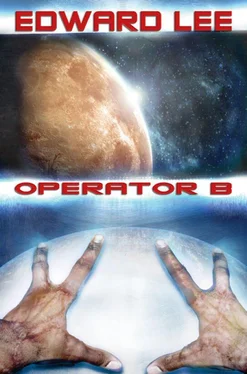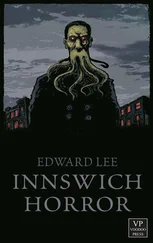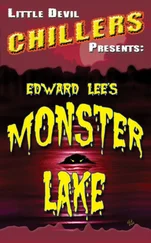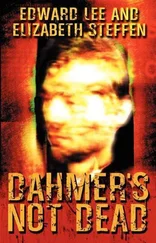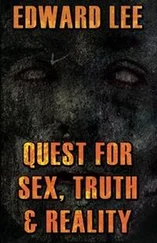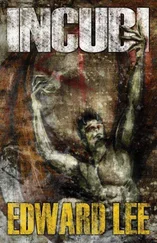He had no time to change into his Class-A’s, but that was fine with him and his current mood. He was about to meet the four-star general who’d destroyed his weekend less than twenty-four hours before his retirement.
Hence, Wentz found it appropriate to report in jeans, sneakers, and a New York Yankees t-shirt, smelling like cat food and bay water.
Hamilton and his AFSS apes escorted him to Section HQ, the CO’s office.
Somehow Wentz wasn’t surprised to see that the CO was not there.
Two Technical Services men were leaving just as Wentz was about to enter: Wentz was used to the sight. They’d swept the office for bugs and other potential live surveillance devices, magged the walls for passive mikes, and placed static grids over the windows to block a reflective-laser tap.
Tech Services, in other words, meant serious business. This probably isn’t a tea party, Wentz reasoned.
The first thing Wentz saw when he entered were two rows of four stars. What he saw next was the tight, sallow face of a man nearing sixty, Westmoreland-ish, sharp-eyed in spite of the price of his years.
Wentz approached the desk, snapped to attention, and saluted. Less than enthusiastically, he said, “General Jack Wentz, B Squadron, 41st Test Wing, reporting as ordered, sir.”
His host sloppily returned the salute. “Drop the protocol, Wentz. I’m as sick of it as you are. Have a seat.”
Wentz sat down, then craned his neck around. A captain with no name tag sat against the wall in a block of shadow. He looked like bad news. Beside him sat a female full colonel, a brunette, who appeared shockingly young. They both looked at Wentz with focused expressions.
“I’m General Rainier—” his host announced.
“Never heard of you, sir,” Wentz said.
“—of the United States Air Force Aerial Intelligence Command.”
Wentz repeated, “Never heard of it, sir.”
“No one has,” Rainier replied, “and we go to the utmost measures to keep it that way, Wentz. Now, I’ll make this short. The woman to your left is Colonel Ashton. She works for me. The captain next to her, whose uniform obviously lacks a name tag—well, you know the drill.”
“Great, a Tekna-Byman Op,” Wentz recognized at once. The Air Force’s version of Army CIC—their names were national security secrets. “Captain Smith, I presume?” Wentz posed.
“Captain Smith is fine, General,” the man said.
“He has some questions for you,” Rainier informed him.
“Smith” stood up, flipping through an aluminum-covered notebook like a traffic cop. Only this notebook had a lock on it.
“General Wentz, is it true that you led the initial F117 anti-fire-control raids—code-named Operation Slipcover—on 15 January, 1991?”
Wentz looked right back into Smith’s face. “No.”
“From May to December, 1993, did you test fly an experimental reconnaissance aircraft codenamed Aurora at the Tonopah Test Reservation in Nevada?”
“No,” Wentz said.
“On 12 February, 1999, did you pilot a parachute mission which involved a low-altitude, low-opening air-drop of Army INSCOM field operatives over the province of Kosovo, twenty-four hours after which a brigade commander of Serbian security forces—a Colonel Zlav—was assassinated by long-range sniper fire?”
“No,” Wentz said.
The room stood momentarily silent.
“All right, Wentz,” Rainier played along. “Here’s your passcard.”
The General smiled sourly, then passed Wentz a 3x5 sealed plastic envelope that read:
RESTRICTED, EYES ONLY, WENTZ, J.,
USAF, 221-55-4668
Wentz broke off the perforated edge, then withdrew another plastic card that read:
4B6: VERBAL CLEARANCE.
Smith cleared his throat. “General? If you will?”
Wentz sighed. “Yeah, I led the Black Bird raids on the Iraqi HF radar sites twelve hours before the war started, and I did the same thing in Panama, and, yes, I LALO’d the INSCOM grunts that scratched that asshole in Kosovo. I flew the Aurora at Tonopah and the X-23 at Palmdale and the SCRAM-jets and nuclear ramjets at Holloman and Goodfellow. I’ve flown the YF-24, the F-22, the JSF, and the YF-118. When Lockheed got the bid for the B-3, I was their flight-profile consultant. I’ve flown every classified aircraft we have, and I’ve participated in more classified aerial ops than I can remember, and with all due respect, sir—”
Rainier nodded. “We know, Wentz, you’re retiring tomorrow. The thing is we have a problem, and you seem to be the only one qualified enough to resolve it.”
Wentz scratched his chin. “Why me?”
The pretty colonel, Ashton, stood up from her chair. “Well, General, it comes on very good authority that you’re the best pilot in the world.”
“Are you?” Rainier asked.
Wentz didn’t like this kind of spotlight. “I don’t know. Maybe. I’ve probably got more black test flights than any one else. But there are plenty of guys out there who are top-notch.”
“Top notch isn’t good enough,” Smith said.
Then Rainier: “If you’re not the best, then who is?”
It didn’t come easy, but Wentz put his ego aside. “Will Farrington,” he admitted.
“You’ve flown with General Farrington?” Rainier asked.
“Well, no, sir. He was Marine Corp,” Wentz said, “and what I heard was he retired as a colonel O-6.”
Ashton again: “What do you know about Farrington?”
It was a difficult question to answer or to even contemplate. Like asking a World War I vet about Sergeant York or the French Foreign Legion in Indochina. Farrington was a myth, a legend within the secret circle of classified aviation. Any pilot who ever saw Farrington fly would never forget it. They said that on their deathbeds, the last thought in any woman’s mind would be the first man she’d made love to.
With black-op pilots, the last thought in your head would the time you saw Farrington fly…
“He was the best test in the business, bar none,” Wentz said. “No one could touch him. When he grabbed the stick, he became part of the aircraft. In 1984 I saw him pull a barrel roll in a C-141. This guy could fly cargo planes like they were fighters, and he could pull Immelmann Turns in helicopters . In Vietnam he brought down sixteen MIGs in a Douglas Skyraider, guns only… There was a war correspondent in Hue who actually filmed Farrington in his Skyraider—a propeller-driven plane—shooting down four jet-powered MIGs like they were slow skeet—not with air-to-air missiles, with mounted guns. First day in test-pilot school, they show that film. Will Farrington was astounding. Kind of like everybody’s icon, the pilot’s pilot. He was the King Zeus of black-op flyers and restricted test pilots.”
“What became of him?” inquired Smith. “Do you know? Did you ever hear any rumors?”
“He disappeared in 88,” Wentz said. “Word is he retired and became a recluse; they said he burned out. Didn’t make sense for a driver that good to retire.”
“That’s because he didn’t retire, General,” Smith informed. “He’s been working for us since then, on a very classified project.”
Wentz peered at Smith, then at Rainier. “You want me to work with Will Farrington?”
“Would that change your mind about retiring?” Rainier asked.
These goddamn people kill me, Wentz thought.
“No.”
General Rainier and Smith traded narrow glances.
“That’s not quite it,” Rainier continued. “What we want, Wentz, is for you to pick up where Farrington left off.”
Wentz didn’t know if he felt more puzzled than pissed off. “I don’t get it, sir.”
General Rainier leaned back in his chair with a sigh. “Farrington committed suicide several nights ago. We was clinically depressed because—well, we think he lacked the confidence to undertake his current mission. We want you to consider that mission.”
Читать дальше
